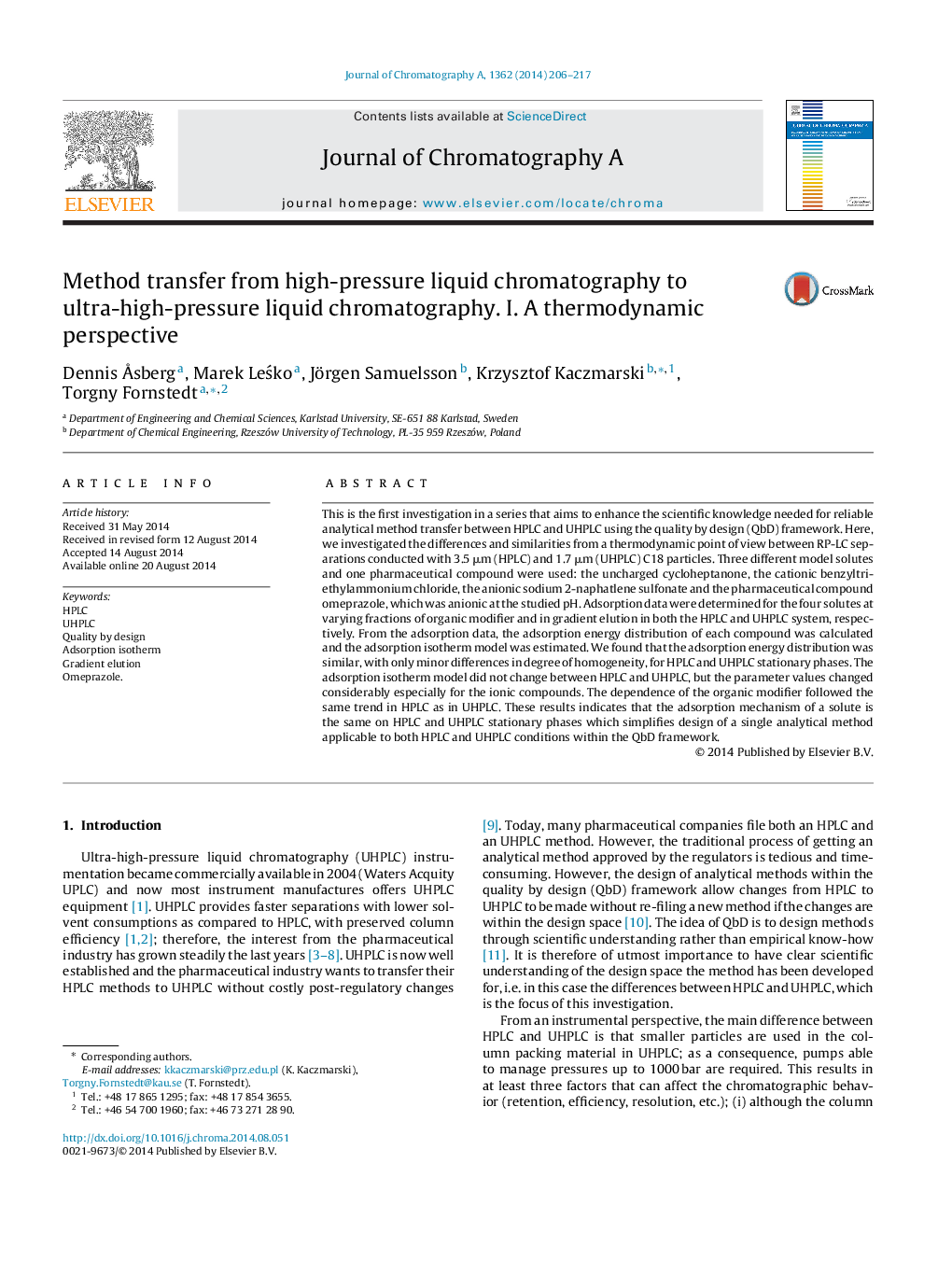| Article ID | Journal | Published Year | Pages | File Type |
|---|---|---|---|---|
| 7612574 | Journal of Chromatography A | 2014 | 12 Pages |
Abstract
This is the first investigation in a series that aims to enhance the scientific knowledge needed for reliable analytical method transfer between HPLC and UHPLC using the quality by design (QbD) framework. Here, we investigated the differences and similarities from a thermodynamic point of view between RP-LC separations conducted with 3.5 μm (HPLC) and 1.7 μm (UHPLC) C18 particles. Three different model solutes and one pharmaceutical compound were used: the uncharged cycloheptanone, the cationic benzyltriethylammonium chloride, the anionic sodium 2-naphatlene sulfonate and the pharmaceutical compound omeprazole, which was anionic at the studied pH. Adsorption data were determined for the four solutes at varying fractions of organic modifier and in gradient elution in both the HPLC and UHPLC system, respectively. From the adsorption data, the adsorption energy distribution of each compound was calculated and the adsorption isotherm model was estimated. We found that the adsorption energy distribution was similar, with only minor differences in degree of homogeneity, for HPLC and UHPLC stationary phases. The adsorption isotherm model did not change between HPLC and UHPLC, but the parameter values changed considerably especially for the ionic compounds. The dependence of the organic modifier followed the same trend in HPLC as in UHPLC. These results indicates that the adsorption mechanism of a solute is the same on HPLC and UHPLC stationary phases which simplifies design of a single analytical method applicable to both HPLC and UHPLC conditions within the QbD framework.
Related Topics
Physical Sciences and Engineering
Chemistry
Analytical Chemistry
Authors
Dennis Ã
sberg, Marek LeÅko, Jörgen Samuelsson, Krzysztof Kaczmarski, Torgny Fornstedt,
